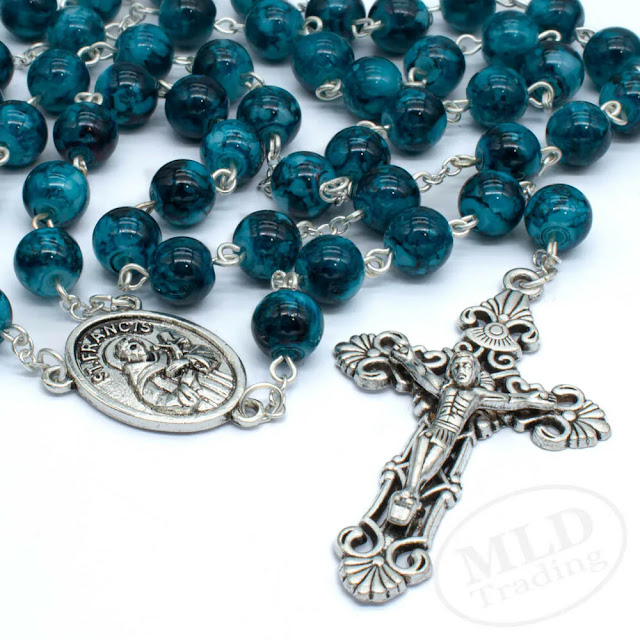Introduction
The rosary is a quintessential symbol of Catholic faith, revered and utilized for centuries as a powerful tool for prayer and meditation. Its origins, development, and enduring significance reveal a fascinating journey through history, culture, and spirituality. This article delves into the rich history, deep importance, and various uses of the rosary, highlighting its evolution from ancient times to the present day.
Origins of the Rosary
Early Beginnings
The concept of using beads to count prayers is not unique to Christianity. Similar practices were found in ancient cultures, such as the Hindu and Buddhist traditions, where mala beads were used to keep track of mantras. The Christian rosary, however, has distinct roots that trace back to the early centuries of the Church.
Development in the Middle Ages
The structured form of the rosary that we recognize today began to take shape in the Middle Ages. The term "rosary" itself comes from the Latin "rosarium," meaning "rose garden," symbolizing the offering of prayers as spiritual roses to Mary. It was during this period that the devotion to the Virgin Mary grew significantly, and the practice of reciting 150 Hail Marys, paralleling the 150 Psalms, became popular among the laity who were unable to read the Psalms.
The Role of St. Dominic
According to tradition, St. Dominic (1170-1221) played a pivotal role in promoting the rosary. It is believed that the Virgin Mary appeared to him in 1208, giving him the rosary as a spiritual weapon to combat the Albigensian heresy. While historical evidence of this apparition is debated, the Dominican Order founded by St. Dominic became instrumental in spreading the devotion of the rosary.
The Structure and Components of the Rosary
The Mysteries
The rosary is divided into different sets of mysteries, each reflecting key events in the lives of Jesus Christ and the Virgin Mary. Traditionally, these are:
- The Joyful Mysteries: Focusing on the early life of Jesus, including the Annunciation, Visitation, Nativity, Presentation in the Temple, and Finding in the Temple.
- The Sorrowful Mysteries: Reflecting on the Passion of Christ, including the Agony in the Garden, Scourging at the Pillar, Crowning with Thorns, Carrying of the Cross, and Crucifixion.
- The Glorious Mysteries: Celebrating the Resurrection and glorification of Jesus and Mary, including the Resurrection, Ascension, Descent of the Holy Spirit, Assumption of Mary, and Coronation of Mary.
- The Luminous Mysteries: Introduced by Pope John Paul II in 2002, these focus on the public ministry of Jesus, including the Baptism in the Jordan, Wedding at Cana, Proclamation of the Kingdom, Transfiguration, and Institution of the Eucharist.
The Prayers
The rosary consists of a series of prayers, including the Apostles' Creed, Our Father, Hail Mary, Glory Be, and the Hail Holy Queen. These prayers guide the faithful through meditation on the mysteries, providing a rhythmic and contemplative experience.
Importance of the Rosary
Spiritual Benefits
The rosary is considered a powerful form of intercessory prayer, offering numerous spiritual benefits. It fosters a deep connection with Mary, who is believed to intercede on behalf of those who pray. The repetitive nature of the prayers allows for meditative contemplation, helping individuals focus on the life of Christ and the virtues embodied by Mary.
Historical Significance
Throughout history, the rosary has been associated with numerous miracles and divine interventions. One of the most notable instances is the Battle of Lepanto in 1571, where a coalition of Christian forces attributed their victory over the Ottoman Empire to the intercession of Mary through the rosary. Pope Pius V instituted the Feast of Our Lady of the Rosary to commemorate this event.
The Rosary in Modern Times
Contemporary Use
Today, the rosary continues to be a cherished devotion among Catholics worldwide. It is used in private prayer, family devotions, and communal settings. The rosary is often recited during times of personal and communal crisis, seeking Mary's intercession for peace, healing, and protection.
Technological Adaptations
With advancements in technology, the rosary has also adapted to modern times. Digital rosaries and smartphone apps provide users with convenient ways to pray the rosary, making it accessible to a broader audience. These tools often include audio guides, meditations, and reminders to encourage regular recitation.
Conclusion
The rosary's journey through history is a testament to its enduring power and significance in the Catholic faith. From its early beginnings to its modern adaptations, the rosary remains a cherished and vital tool for prayer, meditation, and spiritual growth. Its ability to connect the faithful with the divine and provide solace in times of need ensures that the rosary will continue to be a cornerstone of Catholic devotion for generations to come.
---


No comments:
Post a Comment
Please comment if you want to see more posts like this.